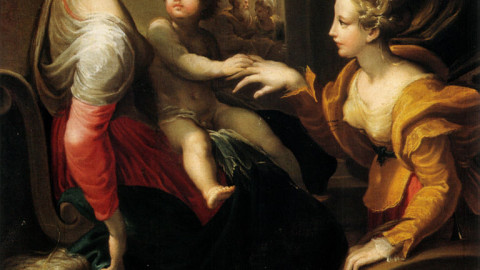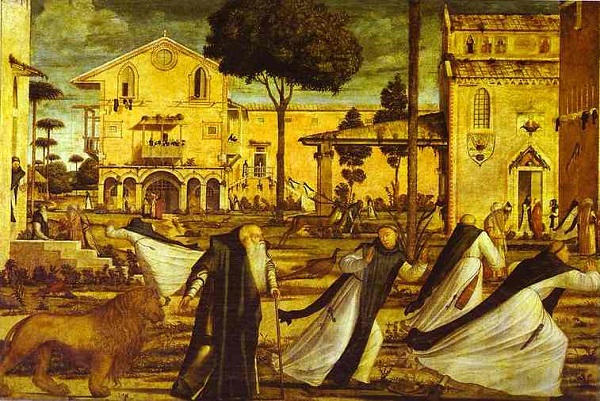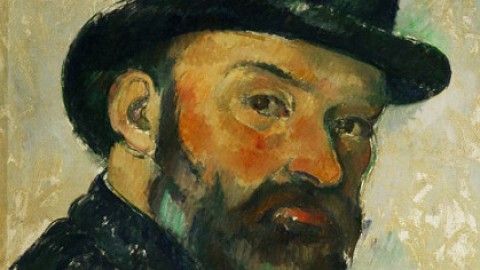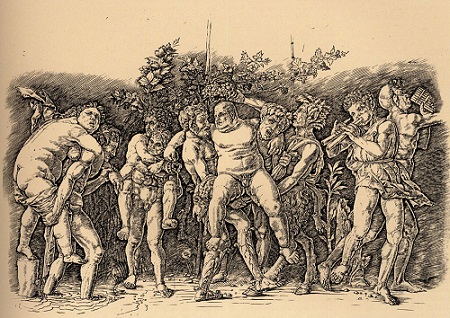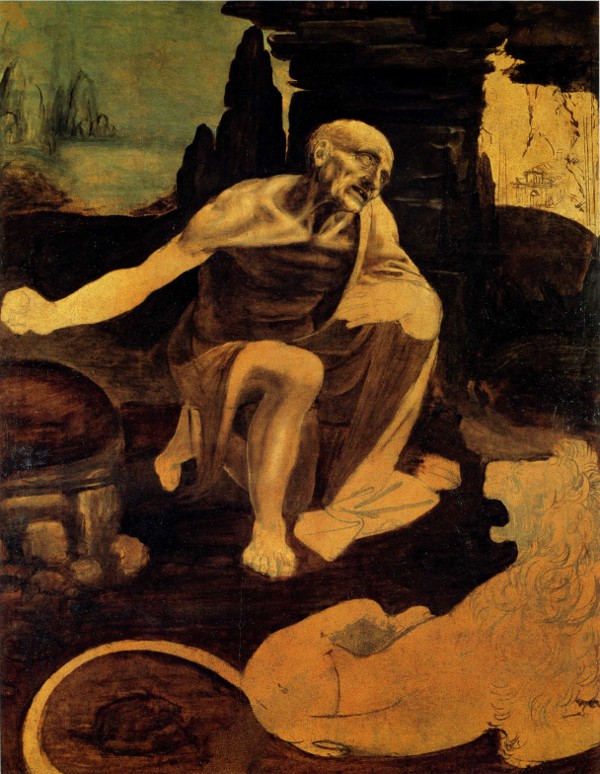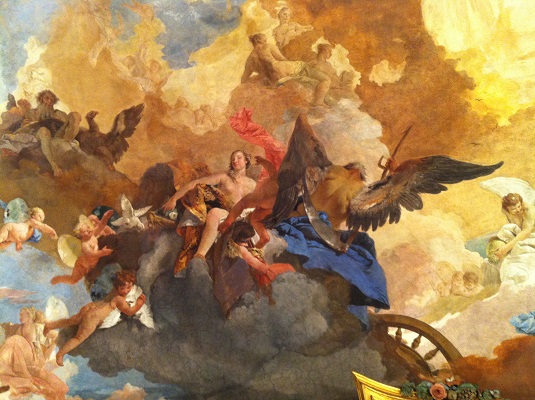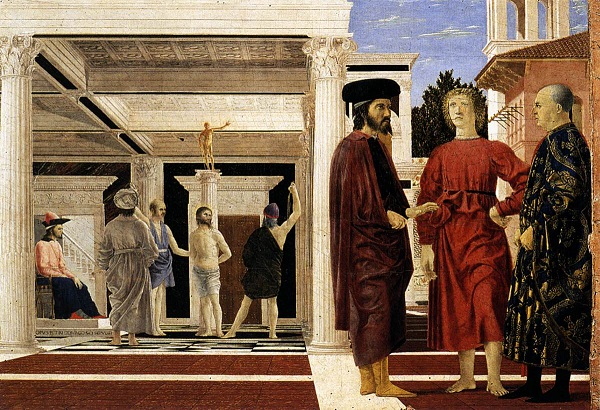
I have recently been reading in some depth about the life of the Renaissance painter and mathematician Pierro Della Francesca, and in particular have been fascinated by Larry Witham’s book called Piero’s Light. One painting of Piero has really captured my imagination, as it has done for many others from an interpretative point of view, is his work The Flagellation of Christ which was probably painted in Urbino in 1460 (and his first known connection with that town). It is a small rectangular panel done with tempera and oil.
The reason why the painting has received so much interest arises because of the way the painting it structured. It was named The Flagellation of Christ because of its literal imagery of a Christ-like figure being whipped but this is far from what the symbolism of the painting may actually represent.
As can be seen, the painting is divided into two halves. The left side shows a man, tied to a column being whipped as what would seem to be a royal figure looking on. If one takes the biblical interpretation, this would seem to be Christ, being whipped prior to this crucifixion, with Pontius Pilate, the royal figure.
In the foreground in the right of the painting are three figures, dressed in garments which doubtless Piero had seen in the courts he had visited in his travels or on the street – especially notable is the dark silk garment emblazoned with the so-called pineapple decoration which was deemed chic Italian fashion at the time. These three men appear to be discussing the flagellation, and none are looking at the viewer. The blonde haired young man has almost the same face as an angel in one of Piero’s other works, The Baptism, so is he too, in this painting an angel, a portent of what was to come for the Christ being whipped in the background?
Another extraordinary feature of this painting is the linear perspective Piero has used. According to Witham, the picture represents an outdoor space extending back from 250 feet, as given that Piero was a mathematician of significant repute (his work on perspective will be the subject of another blog), this is a clear example of the mathematician at work. The viewer here is way off centre, and you look across a complex array of floor tiles, columns, walls and facades. There is an array of stone and marble, with colours of red, purple, white and pink and the painting has two sources of light. Unlike other Renaissance paintings of the time, his perspective lines seem to put the viewer much further away, as if you need to step back to take in the depth and width which one perceives, even though the work itself is quite small.
It has been suggested that given that Piero was something of a circumspect philosopher, who had seen many and significant geopolitical events, and that this is not what is first seems, but is rather a commentary on political events. The ‘Christ’ as depicted is actually Byzantium, scourged by the the Turks, or perhaps it is the analagy between the conflict of Latin and Greek Christians with the Turks. Perhaps it represents the long standing local tradition that held that the assassination of Oddantonio Montefeltro was a symbol of Christ’s tribulation, which rendered the need for personalities, such as those portrayed in the front of the painting to be sad and perplexed by this event.
Witham suggests that perhaps the painting is a representation of Piero’s own humanistic struggles – the clash between the Bible and the classics. He suggests that it is visual representative of the the “…debate over how the the art, literature, mathematics, and philosophy of antiquity could be intergrated with Christianity.”
Whatever the true interpretation of this enigmatic painting – if there is one to be found – there is no doubt that it is a beautiful and captivating work of art. If nothing else, it gives us an insight into the mind of this extraordinary painter who, it seems was the first to combine the use of oil with tempera, was fanatical about the preparation of his works (which resulted in many of his works being such long-drawn out exercises) and whose travels exposed to him so many styles and influences in painting technique.
I love this painting – it constantly challenges me and it would have been wonderful to have known what Piero had in mind by way of conversation when he painted the three unknown figures who so catch our attention. Perhaps that is the charm of the painting – we will never know and so the enigma and puzzle of the painting will always remain.

